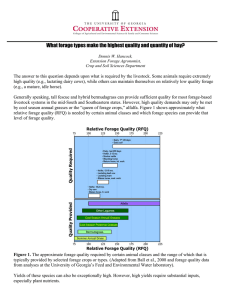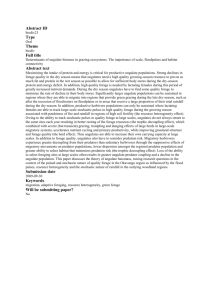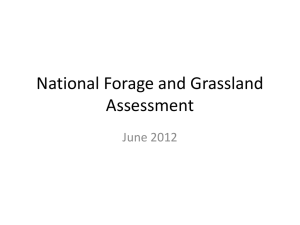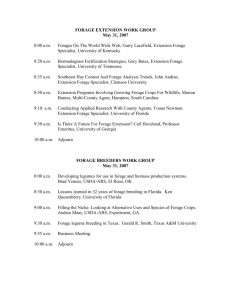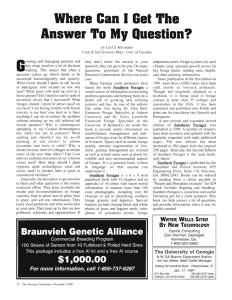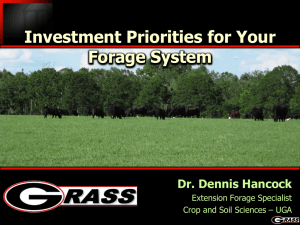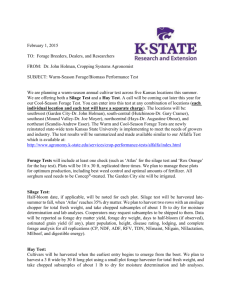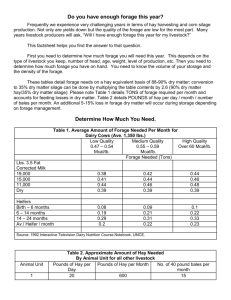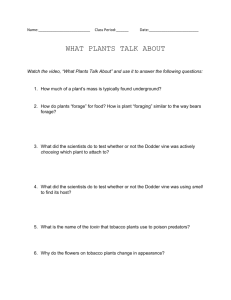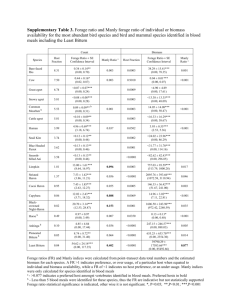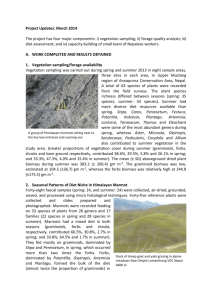GV2M_AROUMIGUIE
advertisement
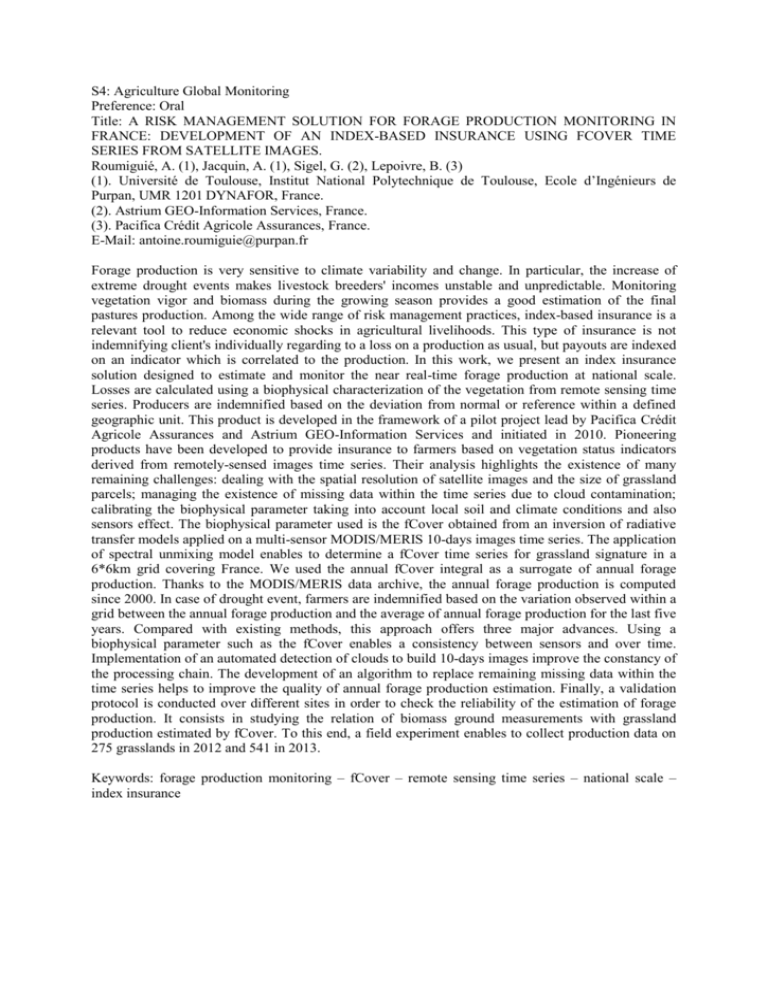
S4: Agriculture Global Monitoring Preference: Oral Title: A RISK MANAGEMENT SOLUTION FOR FORAGE PRODUCTION MONITORING IN FRANCE: DEVELOPMENT OF AN INDEX-BASED INSURANCE USING FCOVER TIME SERIES FROM SATELLITE IMAGES. Roumiguié, A. (1), Jacquin, A. (1), Sigel, G. (2), Lepoivre, B. (3) (1). Université de Toulouse, Institut National Polytechnique de Toulouse, Ecole d’Ingénieurs de Purpan, UMR 1201 DYNAFOR, France. (2). Astrium GEO-Information Services, France. (3). Pacifica Crédit Agricole Assurances, France. E-Mail: antoine.roumiguie@purpan.fr Forage production is very sensitive to climate variability and change. In particular, the increase of extreme drought events makes livestock breeders' incomes unstable and unpredictable. Monitoring vegetation vigor and biomass during the growing season provides a good estimation of the final pastures production. Among the wide range of risk management practices, index-based insurance is a relevant tool to reduce economic shocks in agricultural livelihoods. This type of insurance is not indemnifying client's individually regarding to a loss on a production as usual, but payouts are indexed on an indicator which is correlated to the production. In this work, we present an index insurance solution designed to estimate and monitor the near real-time forage production at national scale. Losses are calculated using a biophysical characterization of the vegetation from remote sensing time series. Producers are indemnified based on the deviation from normal or reference within a defined geographic unit. This product is developed in the framework of a pilot project lead by Pacifica Crédit Agricole Assurances and Astrium GEO-Information Services and initiated in 2010. Pioneering products have been developed to provide insurance to farmers based on vegetation status indicators derived from remotely-sensed images time series. Their analysis highlights the existence of many remaining challenges: dealing with the spatial resolution of satellite images and the size of grassland parcels; managing the existence of missing data within the time series due to cloud contamination; calibrating the biophysical parameter taking into account local soil and climate conditions and also sensors effect. The biophysical parameter used is the fCover obtained from an inversion of radiative transfer models applied on a multi-sensor MODIS/MERIS 10-days images time series. The application of spectral unmixing model enables to determine a fCover time series for grassland signature in a 6*6km grid covering France. We used the annual fCover integral as a surrogate of annual forage production. Thanks to the MODIS/MERIS data archive, the annual forage production is computed since 2000. In case of drought event, farmers are indemnified based on the variation observed within a grid between the annual forage production and the average of annual forage production for the last five years. Compared with existing methods, this approach offers three major advances. Using a biophysical parameter such as the fCover enables a consistency between sensors and over time. Implementation of an automated detection of clouds to build 10-days images improve the constancy of the processing chain. The development of an algorithm to replace remaining missing data within the time series helps to improve the quality of annual forage production estimation. Finally, a validation protocol is conducted over different sites in order to check the reliability of the estimation of forage production. It consists in studying the relation of biomass ground measurements with grassland production estimated by fCover. To this end, a field experiment enables to collect production data on 275 grasslands in 2012 and 541 in 2013. Keywords: forage production monitoring – fCover – remote sensing time series – national scale – index insurance
